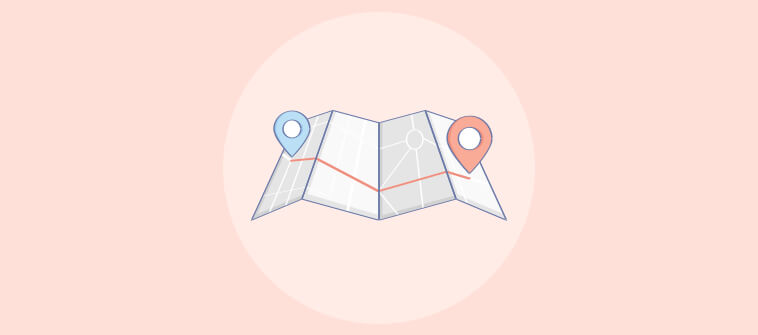Consider this scenario: You just closed a deal with a client to work on a major project. At the time of the project proposal, you had done a random forecast of project duration, price of resources, etc., and had reached a tentative project cost estimate. Based on the same calculation, you go ahead and divide resources and set the project deadline.
But halfway through, you find yourself in a situation of project cost overrun. Also, you have an exhausted team due to the overallocation of resources. What more? The project outcomes now seem difficult to achieve given the unrealistic project expectations and poor stakeholder management.
Is the ‘big-ticket project’ in chaos? Wonder what happened?
Let’s decode this.
All these are early signs of project failure. Not conducting a comprehensive analysis at the time of the project proposal backfired. The outcome? Delayed deadlines and unavoidable budget overruns.
70% of organizations have suffered at least one project failure in the prior 12 months and 50% of respondents indicated that their project failed to consistently achieve what they set out to achieve.
This statistic translates to wasted resources, time, and effort.
While costing can be difficult to control, a predefined strategic plan is your best bet to avoid repeated budget overruns. A cost-benefit analysis is the easiest way to determine a foolproof project plan.
Read on to get all your queries on project cost analysis answered!
What Is a Project Cost Analysis?
Project cost analysis compares and analyzes the costs and the benefits. You do this analysis at the stage of the project proposal.
The analysis evaluates the costs versus the benefits of a potential project. The difference between the costs and the benefits determines whether the project is worth the effort, cost, and resources.
The process begins with a list of expenses and benefits. The expenses include employee salaries, cost of office equipment, and brand damage. The benefits include increased revenue, enhanced user experience, and brand equity.
Now, calculate the return on investment (ROI), internal rate of return (IRR), net present value (NPV), and the payback period. Then, calculate the difference between the costs and the benefits. A general rule of thumb is that the costs should be less than 50% of the benefits. Also, the payback period shouldn’t exceed a year. If your calculation meets both these conditions, the project is worth taking up.
This analysis helps in painting a clear picture of the project performance rate. It is a systematic approach to zero in on the next project. A cost-benefit analysis leads you to a sensible financial decision. This ensures that the project you choose to go ahead with runs as expected and sticks to the set budget.
A well-evaluated project cost analysis identifies costs and benefits to yield solid results. You can rely on this analysis for its business value precision.
Cost benefits analysis has two main applications:
- To determine by how much a project’s benefits outweigh its costs
- To define the project feasibility from a wide variety of approaches
Now that you have a fair idea about what cost-benefit analysis is, we can move on to understand cost-benefit analysis in detail.
Here we go!
The Purpose of the Cost-Benefit Analysis
Imagine this: You have to choose between Project 1 and Project 2. Now, for a sound financial decision, you will compare one project against another. You will compare the costs incurred and the benefits derived from both projects. This is exactly where cost-benefit analysis comes into the picture.
Milton Friedman, an American economist, and statistician viewed the cost-benefit analysis as a success because the inputs result in reasonable outputs. He often argued that the role of a business is to make money and a cost-benefit analysis is a very useful tool in figuring out how to do so.
The purpose of the cost-benefit analysis is to simplify and gain an easy insight into the successful execution of a proposed project.
This analysis outlines the strengths and weaknesses of a project. Conducting a cost-benefit analysis provides the most accurate estimate of what the project development cost will be.
It may be difficult to quantify and measure the exact financial impact of a project, yet, this analysis most definitely provides the closest estimate for an informed business decision.
This project management cost analysis involves measuring and comparing key project management metrics. These metrics include both management and financial metrics. Productivity, schedule variance, return on investment (ROI), and payback period are a few of these metrics.
You gain a competitive edge by adopting this analysis in your routine project selection process. The model identifies the benefits of action as well as the associated costs to determine whether to go ahead with a project or not. The analysis is the first step to effective project management.
Read More: Critical Success Factors in Project Management
The Process of Cost-Benefit Analysis
We’ll go step-by-step through the easy process of a cost benefit analysis. These are key steps that establish whether the proposed project is worth taking up. Let’s dive in.
Step 1: Define Project Goals & Objectives
Start with the basics!
The very first step is to list down the goals and objectives of the proposed project. These define the project outcomes and also drive the next steps of cost-benefit analysis.
The goals and objectives provide an outlook of what the project will achieve. Remember that these goals should be relevant, measurable, realistic, and time-bound.
Step 2: List Down Alternative Scenarios
Next, list down alternative scenarios by comparing similar previous projects. This helps gain a better perspective of the feasibility of a potential project.
Step 3: Identify & Schedule Benefits & Costs
Compile a list of costs and benefits. Take into consideration all costs and benefits. These may include financing cost, staff cost, and improved brand equity.
This analysis gives the most appropriate estimate of the total costs and the total benefits that the potential project holds.
Step 4: Identify Project Stakeholders
Identify the stakeholders with an interest in the project’s outcome. The stakeholders may be project managers, project sponsors, team members, customers, and users. Further, determine the skill set required at every stage of the project execution.
Step 5: Track Measurement Metrics
Make a detailed list of various measurement metrics. The list will comprise return on investment (ROI), internal rate of return (IRR), discount rate, payback period, etc.
Step 6: Convert to Common Currency
Convert all the costs and benefits listed into a common currency. Do this so that you have a common unit of measurement for better analysis and convenience.
Step 7: Measure Net Present Value (NPV)
In this step, you measure the profit from the present value of cash flow over a period of time. This helps in analyzing the profitability of a potential project.
Step 8: Perform Sensitivity Analysis
This step allows you to do an in-depth study of all the variables listed in the previous steps. Identify the robustness of the analysis done by far and the areas of improvement. Compare alternatives and identify the scope of each alternative. Next, weigh all variables like the opportunity cost and the long term risks of the proposed project.
Read More: Step-by-Step Guide for Quality Management in Project Management
How to Evaluate the Cost-Benefit Analysis
Once you have collected the data, your work is halfway done. You now have everything ready to conduct a precise data-driven cost-benefit analysis!
So, let’s delve into the ‘How’ of cost-benefit analysis.
You have the closest estimate of ROI, IRR, NPV, and payback period before you. The list of risks and uncertainties too is in front of you. With this framework in place, you can start drafting the cost-benefit analysis.
Are there any questions that arise? Like what will be the effect of this project on users and non-users? Have I taken the correct parameters? Will these benefits meet the long-term capability of my business?
Don’t worry, it’s great to raise questions and get a clearer picture of the final analysis.
Check the cost versus the benefits aspect of the proposed project. Examine the best approach to achieve your goal while maximizing benefits. Filter out undesirable metrics. Weigh your decisions as objectively as possible. This evaluation is key to the decision-making process of the potential project.
Most profitable organizations, from startups to small businesses to large enterprises, use cost-benefit analysis to help them make important business decisions. With this, they identify the best return on an investment that they will get if they decide to pursue a project.
The intelligent use of cost-benefit analysis is fundamental to help you minimize risks and maximize gains on every project.
How Accurate is Cost-Benefit Analysis?
A cost-benefit analysis is a smart way to assess the impact of a potential project on your business. It is undeniably the most reasonable approach to determine the efficiency of a project.
If complete accuracy is what you’re aiming for, then it is advisable to keep updating this analysis. This approach keeps you updated about real-time challenges thus reducing risks or uncertainties.
The cost-benefit analysis is a smart decision-making tool to identify and understand the consequences of the actual project life cycle.
Read More: What Is Cost Management in Project Management
Are There Limitations to Cost-Benefit Analysis?
Cost-benefit analysis is a well-established tool to aid decision-making for a proposed project. Yet, we have shortlisted a few points to remember while defining and measuring the different aspects of the analysis. Take note of these points and you will face no limitations while estimating the strengths and weaknesses of any project.
1. Omission Error
This error occurs when you accidentally omit relevant costs and benefits that were crucial to the project. Not measuring customer satisfaction or loss of intellectual capital following employee layoffs may contribute to the limitation of the analysis.
2. Valuation Error
This error is a result of incorrect valuation credited to a cost or a benefit. A disbalance of the final analysis may occur due to the downplay or overestimation of a particular cost or benefit.
3. Ignoring Intangible Costs and Benefits:
The incorrect quantification of intangibles will lead to an inaccurate valuation. This results in a failed cost benefit analysis.
4. External Factors:
Inflation, interest rates, etc. impacts the accuracy of the analysis. These are difficult to quantify in the beginning but a regular update of the analysis helps control the effects of these changes on the project.
Minimize Costs and Maximize Benefits With Every Project
“Truly successful decision-making relies on a balance between deliberate and instinctive thinking”
-Malcolm Gladwell
The cost-benefit analysis allows organizations to avoid overthinking and spring into action. Be confident and assured of the best possible project outcome with this analysis.
A cost-benefit analysis facilitates wise decision-making for the desired business outcome. It is best when your business objective demands the most appropriate alternative from a wide range of projects. The analysis is an unbiased method of assessing benefits, costs, and profits.
So, if you are wondering whether a proposed project will be worth the effort, time, and resources that will go into making it a success, then you now know what to start off with right away!
Frequently Asked Questions
Q. What are the two main parts of a cost-benefit analysis?
Two main parts of cost-benefit analysis are the identification and measurement of comparable metrics such as ROI, payback period, and customer satisfaction. The accuracy and reliability of this analysis are the basis of the project life cycle.
Q. How do you calculate the viability of a project?
A project is viable if the economic benefits of the project exceed its economic costs. Calculate this through factors depending on the size and the scale of your business.
FREE. All Features. FOREVER!
Try our Forever FREE account with all premium features!





